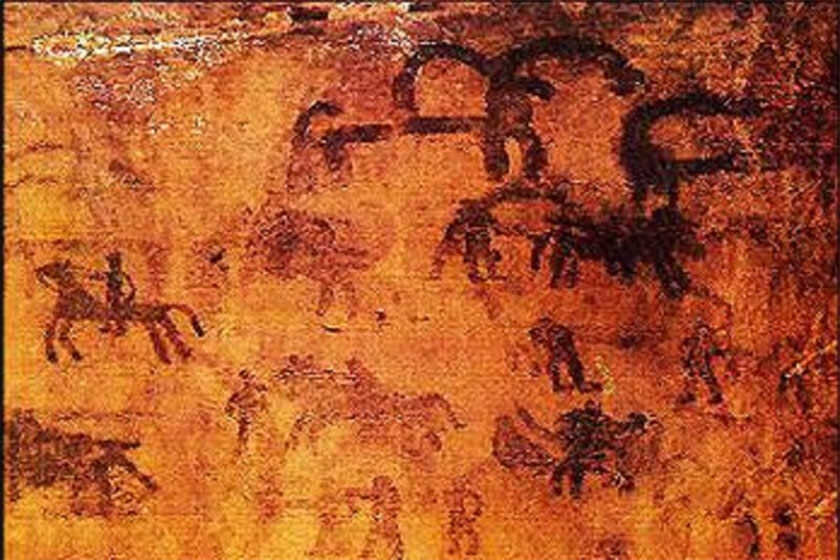Ancient petroglyphs discovered in western Iran

TEHRAN – Another cluster of ancient petroglyphs has recently been discovered in a barren plain in Lorestan province, western Iran.
“The petroglyphs, which bear carved symbols and figures in the two colors of black and ocher, were discovered during an architectural survey conducted in Chegeni county of Lorestan province,” the provincial tourism chief, Seyyed Amin Qasemi, announced on Monday.
“The drawings include animal, human, and plant motifs as well as scenes of hunting and horseback riding,” the official said.
The Islamic Republic is seeking an integrated UNESCO recognition for millennia-old petroglyphs scattered across the country.
Iran will put forward clusters of its millennia-old petroglyphs—located in Khomein county of Markazi province, and the ones dotted in the provinces of Isfahan and Lorestan--as a candidate for inclusion in UNESCO’S World Heritage list.
Teymareh petroglyphs, which are located in Khomein county, have been estimated to be carved in a period spanning from 40,000 to 4,000 years ago, providing insights into past eras and cultures both by tools utilized for carving and themes being carved.
Last year, a prehistorical petroglyph, which bears Pahlavi script written by ordinary people of the time, was found during an archaeological survey in the Teymareh region of central Iran.
“This is the sixth petroglyph, engraved with Pahlavi script, which has so far been found in the highlands of Teymareh. And the petroglyph is estimated to date back to 2,200 years ago,” according to Iranian archaeologist Mohammad Nasserifard.
Nasserifard had earlier proposed a bold hypothesis on a variety of petroglyphs that are scarred in the region, saying “some prehistorical residents of the Iranian plateau migrated to the Americas.” His assumption is based on evidence from similarities between the petroglyphs and cave painting symbols in central Iran and the ones found in the Americas.
“After years of exploring ancient paintings inside Iran’s caves and mountains and other parts of the globe, amazing achievements have been made in this regard,” Nasserifard said.
“Appearance similarities, artistic styles, and uniform themes of ancient petroglyphs and cave paintings of this land (Iran) reveal many missing links in human history and arts one of which is the resemblance of ancient artifacts in Iran with ones found in the American continent.”
In March 2020, a team of entomologists and archaeologists concluded that a previously-founded petroglyph showcases a six-limbed creature with the head and arms of a praying mantis. The rare 14-centimeter rock carving was first spotted in the Teymareh rock art site during surveys between 2017 and 2018, but could not be identified due to its unusual shape.
International experts Jan Brouwer and Gus van Veen have examined the Teymareh site estimating its carvings were made 40,000-4,000 years ago. Prehistoric rock art provides insights into past eras and cultures as archaeologists classify the tools for the carvings by specific eras Incising tools include flint, metal, or thigh bones of hunted prey.
AFM/
Leave a Comment